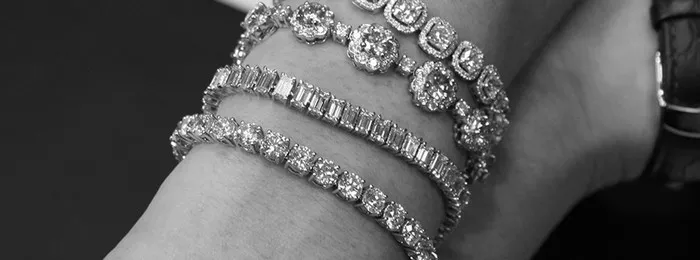Bracelets have been adorning human wrists for millennia, serving as symbols of status, spirituality, and style across various cultures and epochs. From ancient civilizations to modern fashion trends, these wrist ornaments have held a significant place in human adornment. However, the etymology behind the term “bracelet” remains veiled in historical intricacies and linguistic evolution. In this comprehensive exploration, we delve into the origins and evolution of the term “bracelet,” shedding light on its linguistic journey through time and culture.
Ancient Origins:
To understand why bracelets are called bracelets, we must embark on a linguistic journey back to ancient civilizations where these adornments first emerged. The word “bracelet” finds its roots in the Old French word “bracel,” which referred to a “small brace” or “armlet.” This term, in turn, traces its origins to the Latin word “bracchiale,” derived from “bracchium,” meaning “arm.”
In ancient times, bracelets were not merely decorative accessories but held deep cultural and symbolic significance. In Egyptian civilization, for instance, bracelets were worn not only for adornment but also as talismans believed to offer protection and ward off evil spirits. Similarly, in ancient Rome, bracelets were worn as symbols of status and allegiance, with intricate designs often depicting familial lineage or membership in prestigious groups.
Evolution of the Term:
The evolution of the term “bracelet” mirrors the evolving forms and functions of these wrist adornments throughout history. As societies progressed and languages evolved, so too did the linguistic nuances associated with these accessories. The transition from Old French “bracel” to the modern English “bracelet” signifies not only a shift in language but also a transformation in the cultural perceptions and uses of these ornaments.
During the Middle Ages, bracelets continued to hold sway as symbols of wealth and social standing, with precious metals and gemstones adorning the wrists of nobility and clergy alike. The term “bracelet” became firmly entrenched in the English language during this period, solidifying its place in the lexicon of jewelry and fashion.
Cultural Significance:
Beyond their linguistic origins, bracelets carry profound cultural significance across diverse societies. From the intricate beadwork of Native American tribes to the elaborate goldsmithing of Indian artisans, each culture imbues bracelets with its own unique symbolism and meaning.
In many indigenous cultures, bracelets are intricately woven from natural materials such as feathers, shells, and fibers, serving as expressions of tribal identity and connection to the natural world. These adornments often play central roles in rituals, ceremonies, and rites of passage, symbolizing unity, protection, and spiritual guidance.
In other cultures, such as in South Asia, bracelets known as “bangles” hold ceremonial significance, particularly for women. These ornate accessories are exchanged during weddings and festivals, symbolizing marital status, prosperity, and blessings for the wearer. The term “bangle” itself derives from the Hindi word “bangri,” reflecting the deep cultural roots of these wrist adornments.
Fashion and Trends:
In modern times, bracelets have transcended their traditional roles to become versatile fashion accessories embraced by people of all ages and backgrounds. From sleek metal cuffs to bohemian beaded strands, the variety of styles and designs available reflects the diverse tastes and preferences of contemporary consumers.
The term “bracelet” has thus expanded beyond its original linguistic boundaries to encompass a wide array of wrist adornments, including charm bracelets, friendship bracelets, and fitness trackers. In the ever-evolving landscape of fashion and trends, bracelets continue to reinvent themselves, adapting to changing tastes and technologies while retaining their timeless appeal.
Conclusion:
The etymology of the term “bracelet” offers a fascinating glimpse into the linguistic and cultural tapestry of human civilization. From its ancient origins in Old French and Latin to its contemporary manifestations in global fashion, the word “bracelet” encapsulates centuries of history, symbolism, and innovation.
As we adorn our wrists with these timeless accessories, let us not only appreciate their aesthetic beauty but also honor the rich tapestry of culture and tradition from which they arise. Whether worn as symbols of status, expressions of personal style, or tokens of affection, bracelets continue to weave their way into the fabric of human experience, connecting us to our past, present, and future selves.
FAQs
What is the meaning behind bracelets?
Bracelets have held significant cultural and personal meanings throughout history. Across various civilizations, they symbolize protection, luck, status, and even spiritual beliefs. In ancient times, people adorned themselves with bracelets made from materials like shells, stones, or metals, believing they could ward off evil spirits or bring prosperity. Today, bracelets continue to serve as expressions of personal style, milestones, and even solidarity with causes or movements. They often carry sentimental value, gifted to commemorate special occasions or relationships.
Why is a bracelet not called a wristlet?
The term “bracelet” has its origins in the Middle French word “bracel,” meaning “arm ring” or “bracelet.” It specifically refers to a decorative band worn around the wrist or arm. While “wristlet” could theoretically describe a similar item, “bracelet” has become the widely accepted term in English to denote such accessories.
Why do Catholics wear bracelets?
Catholics, like many other religious individuals, may wear bracelets as a form of devotion, remembrance, or identification with their faith. Some bracelets, such as rosary bracelets, incorporate religious symbols or beads representing prayers, serving as a tangible reminder of one’s spiritual beliefs. Others might wear bracelets adorned with saints’ medals or crosses as a way to express their devotion or seek protection. Additionally, bracelets can be used as sacramentals, objects blessed by the Church to bring spiritual grace and protection to those who wear them.

